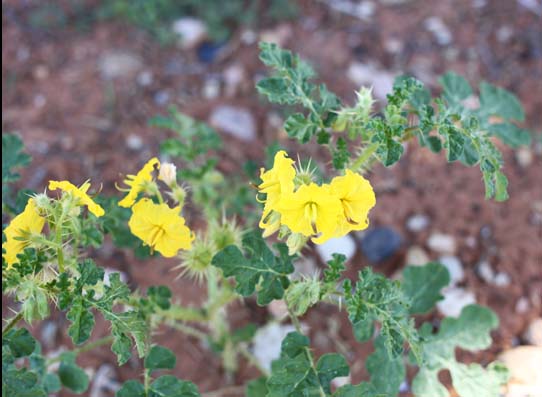A hundred years ago, sixteen million Sage Grouse danced their elaborate, fascinating courtship dance across the sagebrush sea of the western states. Today, 98 percent of these wonderful birds are gone.
America’s largest grouse, the Greater Sage Grouse, is a gentle, sensitive bird who lives among the sagebrush; a bird who, like its distant cousins – chickens, peacocks, turkeys, quail, and pheasants – lives and feeds on the ground and cannot fly more than very short distances.
The Sage Grouse and their habitat are severely threatened. This is the story of just one of these threats. As the Sage Grouse goes, so goes the west as we know it. Throughout the western states a similar pattern is being repeated, time and time again, of pressures at work to develop or industrialize wild, natural lands – an inexorable force that seems bent on turning the great open regions of the west into industrial or population centers like those along the East and West Coasts.
A proposal to expand the Alton Coal Mine, in Kane County, Utah, would allow strip mining on an area of land that has been designated as essential Sage Grouse habitat. Sage Grouse can only live on land that is covered in sagebrush.
 In a recent interview, Erik Molvar, Director of the Sage Brush Sea Campaign for WildEarth Guardians, pointed out that the area under consideration for coal expansion includes a narrow bottleneck of Sage Grouse habitat. Strip mining on this land would cut off the Sage Grouse winter migration to the south, dooming that Sage Grouse population.
In a recent interview, Erik Molvar, Director of the Sage Brush Sea Campaign for WildEarth Guardians, pointed out that the area under consideration for coal expansion includes a narrow bottleneck of Sage Grouse habitat. Strip mining on this land would cut off the Sage Grouse winter migration to the south, dooming that Sage Grouse population.
Some time ago, the Bureau of Land Management, which is charged with protecting the Sage Grouse, had withdrawn these same lands from consideration for coal mining expansion based on their value as Sage Grouse habitat. That decision has now been put aside, and the area is once again under threat.
Strip mining for coal on Sage Grouse land?
The Utah Sage Grouse Management Plan, drawn up by the Utah Division of Wildlife Resources, can be viewed on the DWR website. (The link is below.) This is Utah’s official plan for protecting the Sage Grouse, and it shows as prime Sage Grouse habitat, the exact area where the coal mine is planning to do strip mining.
If strip mining were to be carried out in this area, then the Sage Grouse living there would be cut off from being able to migrate to their winter habitat.
 Sage Grouse cannot co-exist, in any case, on land being used for strip mining, which totally destroys the surface of the earth and does away with all the plants and animals that are there – all the trees, the deer and other mammals, and the birds. This Sage Grouse land is the southernmost extent of lands that the Sage Grouse inhabits, meaning that it is already at the farthest, very vulnerable, edge of their range.
Sage Grouse cannot co-exist, in any case, on land being used for strip mining, which totally destroys the surface of the earth and does away with all the plants and animals that are there – all the trees, the deer and other mammals, and the birds. This Sage Grouse land is the southernmost extent of lands that the Sage Grouse inhabits, meaning that it is already at the farthest, very vulnerable, edge of their range.
On September 22, 2015, the U.S. Fish and Wildlife Service announced their decision not to list the Sage Grouse as endangered (though with only 2% of their historic population remaining, one might imagine that they would have been listed). The rationale for this decision not to list them is the existence of a land management plan spanning eleven western U.S. states that, it is claimed, will protect the Sage Grouse from extinction. The Utah Sage Grouse Management Plan is a part of this overall management plan. Therefore it should be honored.
However, despite all this, the Bureau of Land Management is considering granting the lease to the Alton Coal Mine to do strip mining on the Sage Grouse lek and nesting area. A lek is the area where the birds carry out their courtship dance. Near the lek is their nesting and brooding area; both these, as well as sage grouse feeding grounds lie within the proposed Alton strip mining lease area.
Erik Molvar explained that although WildEarth Guardians had worked closely with several other organizations and with the USFWS to create this new federal plan, in the end, the final plan did not meet their expectations. He said, “There are key loopholes and numerous defects which allow for many exceptions for resource extraction in areas which should rightly be maintained as key Sage Grouse habitat.” In other words, loopholes in the final plan could allow coal, oil, or gas extraction on essential Sage Grouse habitat.
Human activity, especially coal, oil, and gas extraction, are, of course, the reason the Sage Grouse is at risk in the first place. Pitting the Sage Grouse against big U.S. or multinational corporations does not seem like a fair match.
Continued in part two and three…
Top photo: © Robert Crow / Dreamstime.com /A male sage grouse.
Second photo: Sharon St Joan / Sagebrush, which the Sage Grouse depend on, blooming in the fall.
Third photo: Sharon St Joan / Buffalo burr, another common wildflower in Kane County, Utah.





